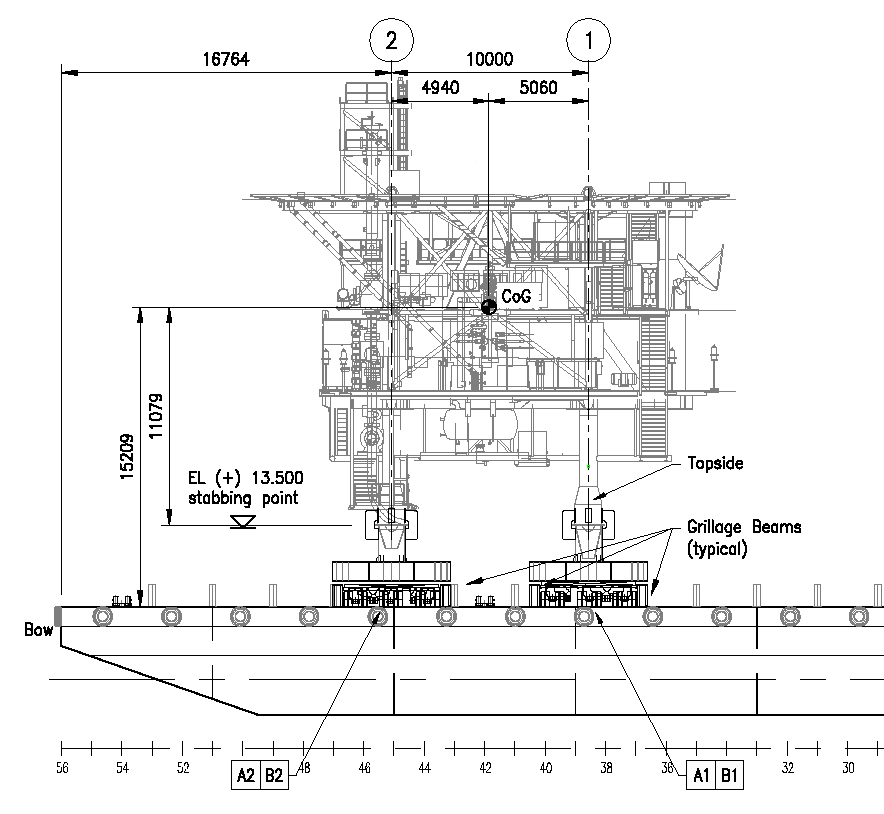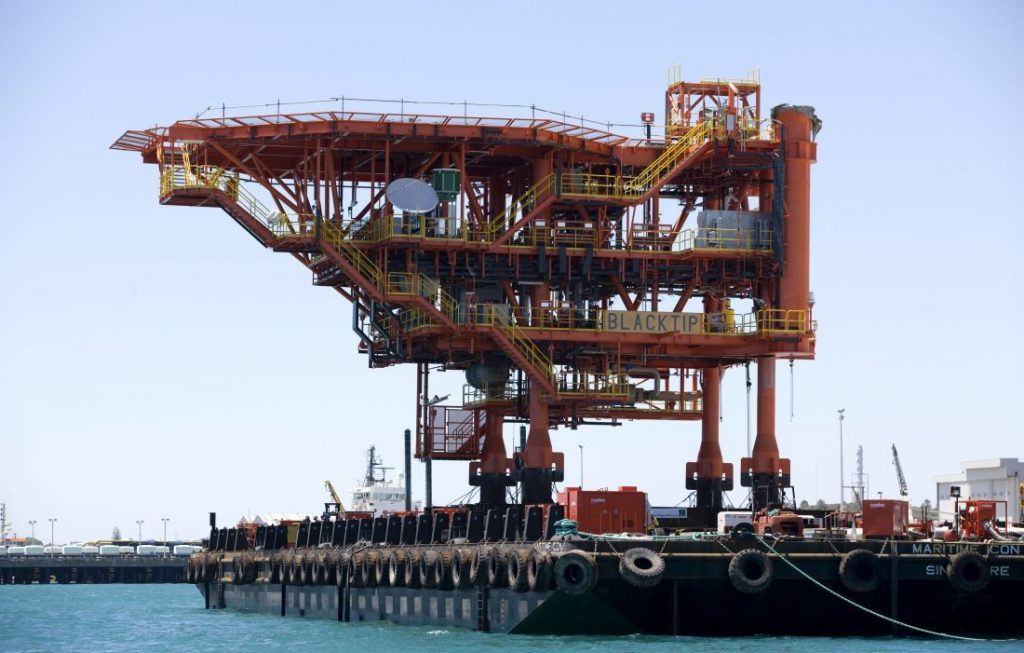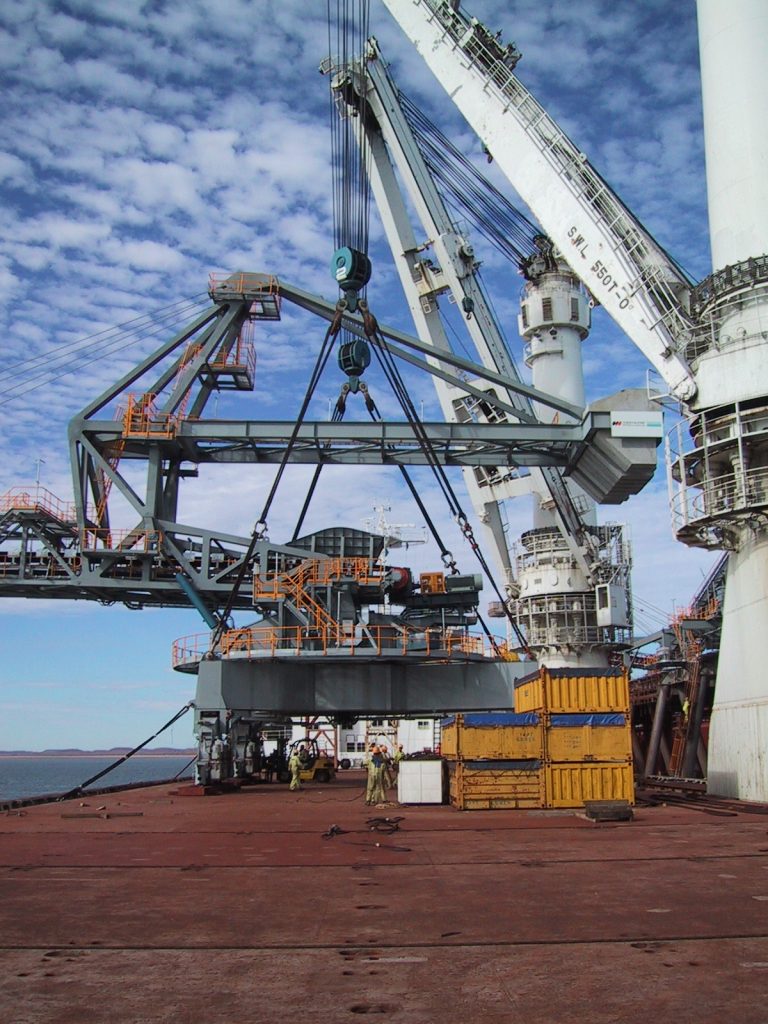July 5, 2018
The following Insight from Mike Priestly, Senior Consultant, discusses the importance of weight control and management in the marine transport and installation domain:
My experience on projects over the last couple of years has revealed huge opportunities for better weight management and less cost and risk in project work scopes.
During the past 10 years in Australia, there was a boom in modularised transportation of project cargo and equipment with an abundance of marine and road transportation capacity available. All manner of cargo and equipment was shifted at little risk. As project budgets tighten, so does the desire to revert to routine engineered solutions. However the engineering landscape has changed and the fundamentals of weight management receive less attention.
What is weight management and why is it necessary?
Weight management is a basis for designing, planning, evaluating and delivering fit for purpose structure or equipment. It is an essential attribute of any design and the engineering must for account for weight and any margin of uncertainty about weight throughout the fabrication and construction process such that the final module or structure as delivered on site remains within the design intent.
Weight management therefore is a thread that weaves through all design, fabrication, construction, erection and the associated boundaries. It also weaves through every contractual boundary, demanding custodianship until completion and compliance with the design intent is demonstrated.
If the weight is not managed, the knock on effect can be significant. As an Offshore Naval Architect involved in both small and mega projects I have been privy to a few crackers that could easily have been avoided:
- Vessels that were launched and floated deeper than their designed waterline, requiring additional engineering and approvals from Classification societies and authorities.
- FPSO’s that underwent deadweight surveying and inclining to determine displacement and CoG (KG), but were found to have KG out of tolerance requiring additional stability and loading calculations, additional motions analysis for topside structural integrity, and additional mooring analysis and tank testing.
- Large modular equipment lifted onto Heavy Lift Ships (HLV’s) using single cranes where actual versus designed CoG’s required change control, resulting in delays to loading and departure to site.
- Modules planned to be transported by Self Propelled Modularised Transporters (SPMT’s) requiring last minute re-configuration of the trailers to meet stability and loading limitations.
The critical point about these examples is the outcome was discovered late in the project, came as a surprise to the relevant contractors who despite their best intent, were lumbered with the outcomes over which they had no control and required significant time, money and resources to remedy. In many cases, the engineered remedy was enough to facilitate client acceptance, however the experience lived on to haunt the product throughout the remainder of the product life cycle.
In the Oil and Gas Industry weight control and management is covered by ISO 19901-5. In general ships are covered by: ASTM F1808 – 03(2013) Standard Guide for Weight Control Technical Requirements for Surface Ships and SAWE RP M-7 2017 Weight Control Technical Requirements for MSC and Similar Ships, Commercial Ships and Other Small Craft.
These standards set out approaches that must form part of a risk assessed and tailored methodology. Importantly, final weighing forms part of the process and should serve to validate the parameters of any weight and CoG management.
While lighter structures can present opportunities, weight increases, and unplanned CoG positions are likely to present a significant risk to the project and should be understood. Implementation of weight management should be driven and managed by the designers/engineers and disseminated via reporting through upwards and to the various stakeholders and contractors. The process should be audited and form part of the greater project quality system.
Offsite manufacturing and assembly requires more diligence and implementation of a broader weight management strategy interwoven through all scopes of work. While most shipyards and fabricators have dedicated resources and software for weight management, the philosophies and protocols need to compliment the greater weight control strategy and provide consistency.
ONA is well placed to support projects develop, contract and execute weight management strategies. We work collaboratively with project teams supporting technical assurance outcomes on both simple and technically complex work scopes. ONA also bring significant technical acumen in naval architectural and project engineering of offsite manufacturing including marine and road transportation and offshore installation.
Our expertise is bringing value to your project through weight management strategies.
Contact Us Today




